When Emacs users explain why they use it, it’s usually big picture features:
elisp, org-mode, dired. The fact that it’s been around forever and will
continue to be around for decades to come. For me it’s the humble M-q, or, in
the vernacular, Alt+q or Option+q. This is the key combination for
fill-paragraph. It reshapes a paragraph of text so that it fits under
80 columns.
This is a marvelously useful feature that is sadly absent from many other editors. I would probably have switched to Zed already if it had this, or the ability to extend the editor with custom buffer-manipulation commands.
If you’re writing prose your lines will frequently exceed the width of the editor. Then you have two choices. You can use word-wrap, which doesn’t play well with indentation for nested content:
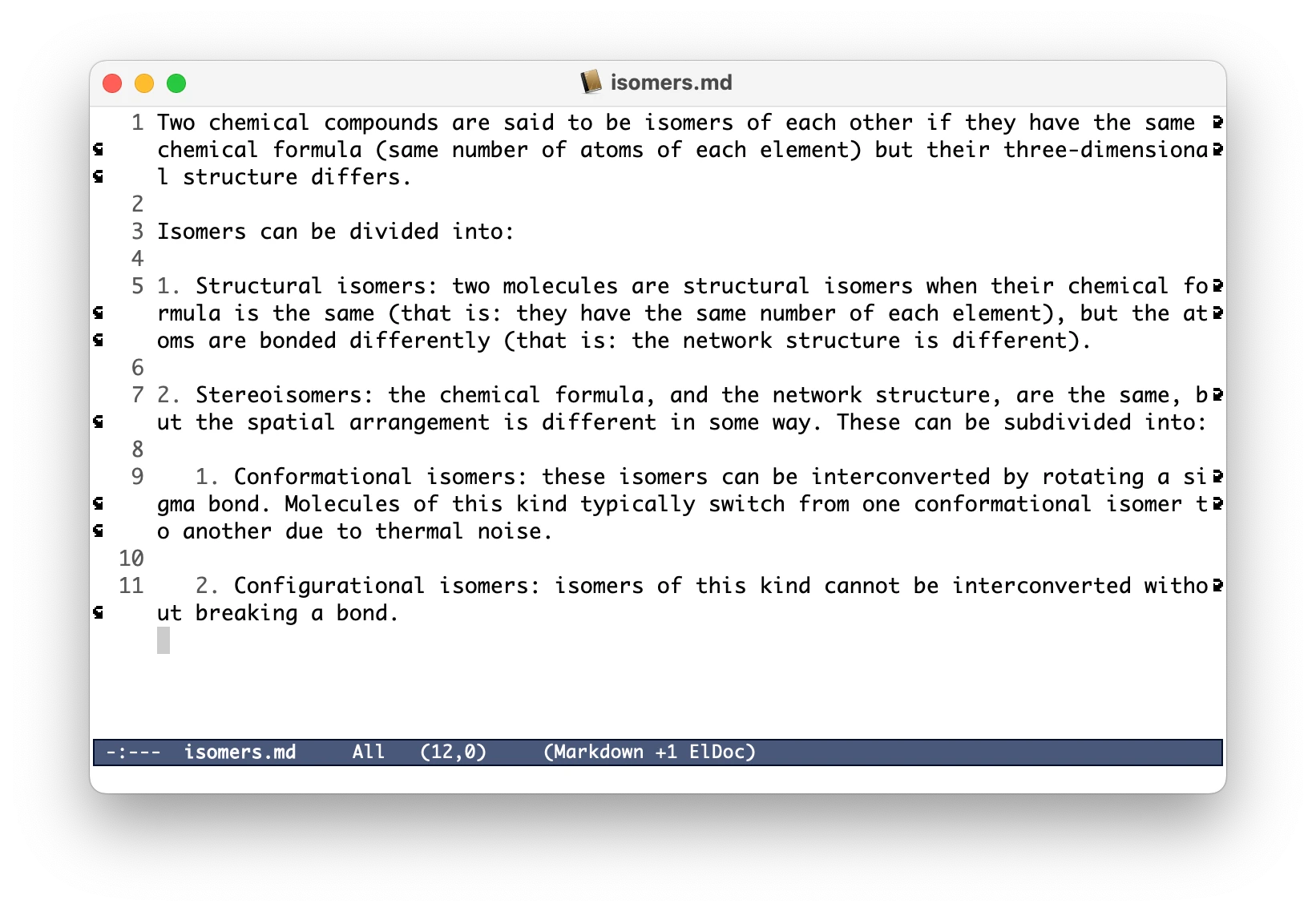
Or you can toggle-truncate-lines, which puts much of the text out of reach:
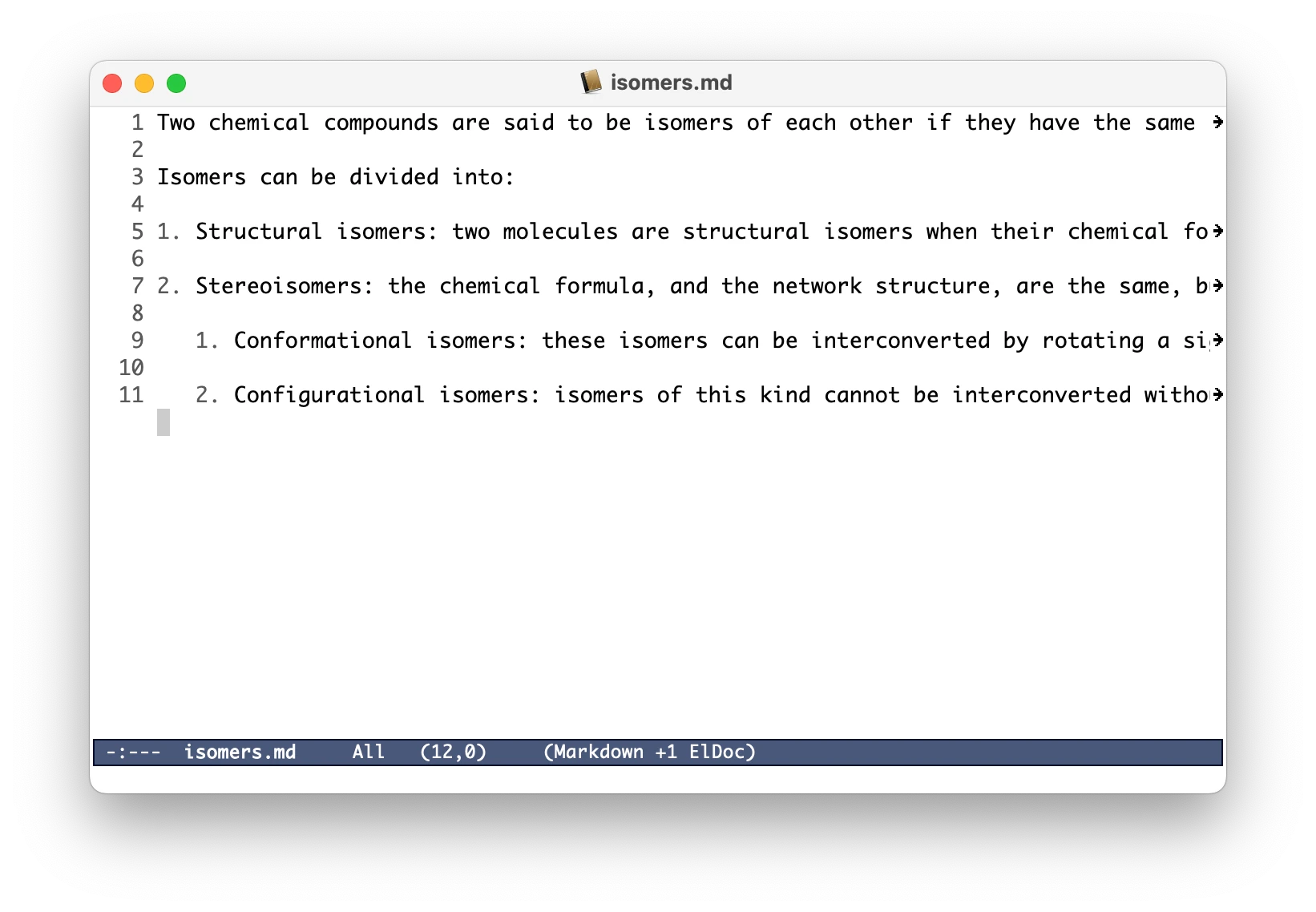
Or you can insert newlines so that the text fits within the column limit, but
doing this by hand is incredibly tedious. Enter M-q:
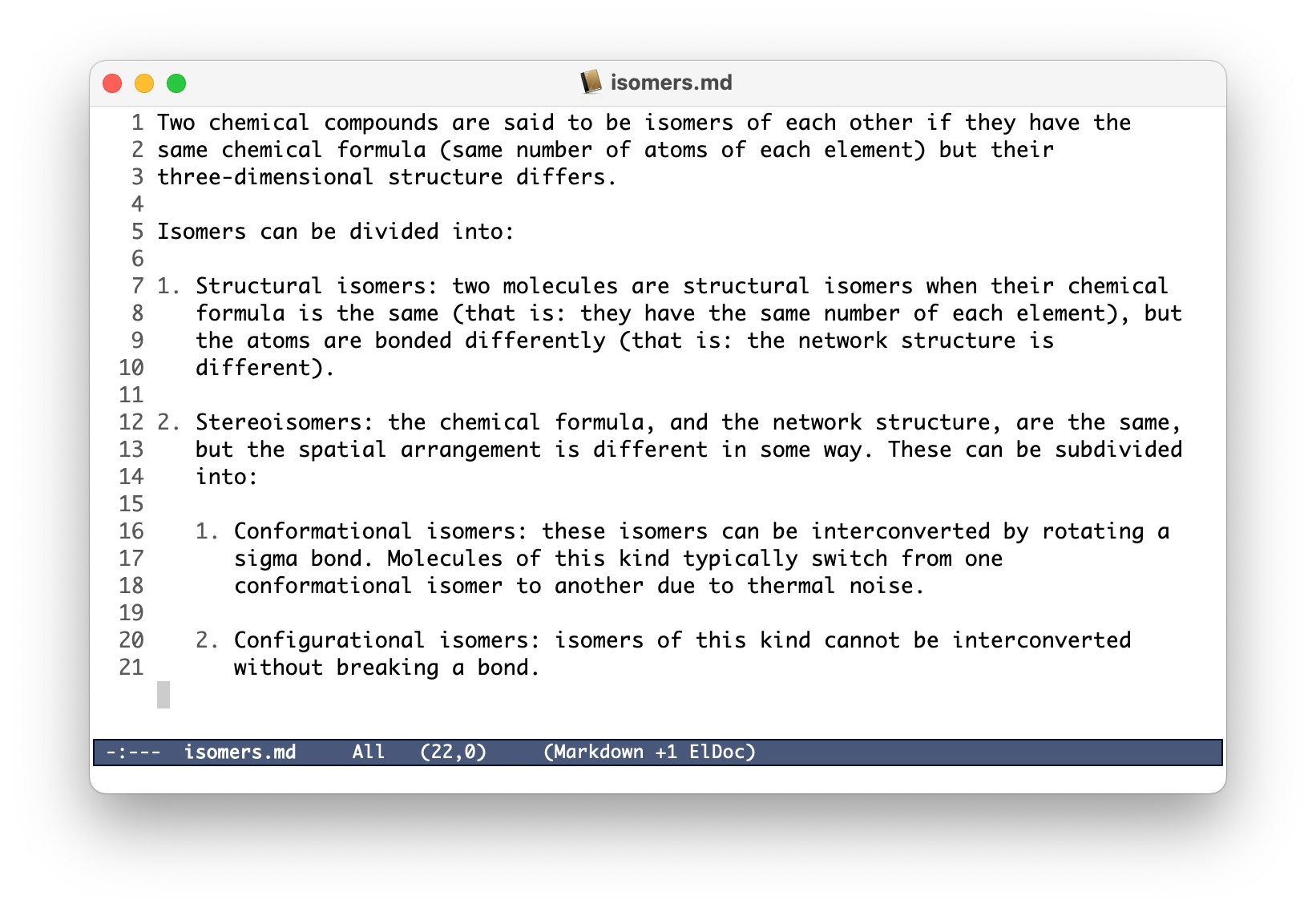
Gorgeous. My only complaint is the ragged edges. Maybe when LLMs are good enough
we can have semantic-fill-paragraph, where the text content is rewritten so
that on each line, a word happens to end at the 80th column.
Emacs is full of hundreds of microscopic quality of life features like this,
accreted over decades: sort-lines does what it says, M-= counts the
number of words in the selection, and markdown-mode has a
really useful feature for automatically aligning Markdown tables, so you can
very quickly write this:
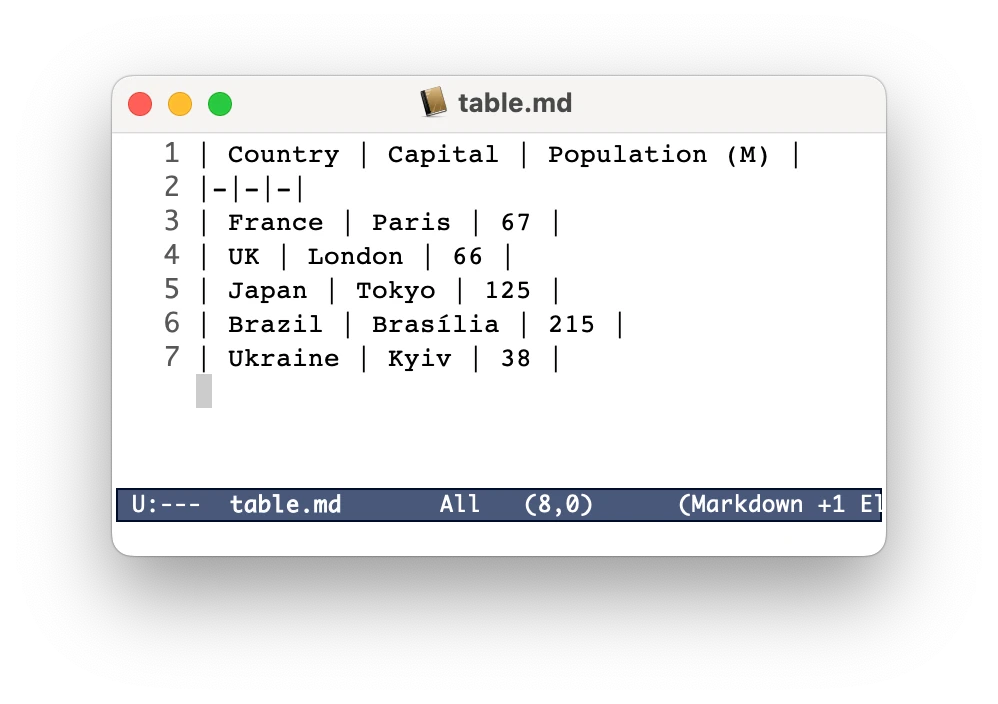
And C-c C-d turns it into this:
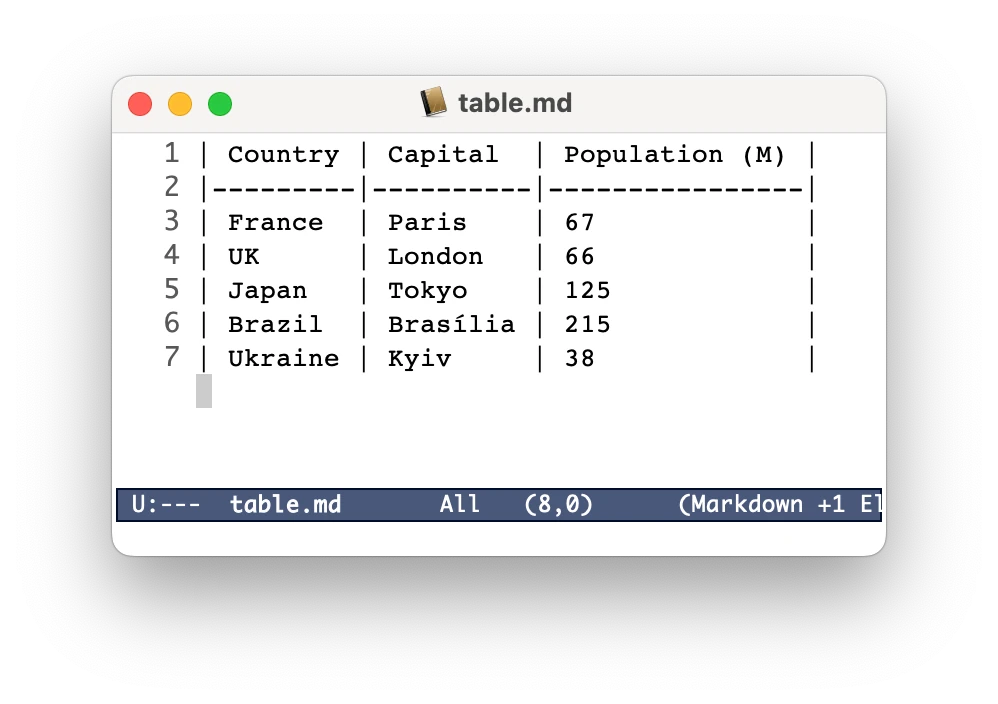
And so despite the jank I persist in using Emacs.